Big mistake Aussie tourists make at this iconic US location
It’s one of the most iconic landscapes on Earth, but tourists are apparently doing it all wrong — making one key mistake.

Standing on the edge of vastness in US canyons country it’s almost impossible to comprehend all that is before you.
Rich hued deserts; snow capped mountains; dormant volcanoes; the highest sandstone cliffs on the planet; vibrant red rock landscapes; deep valleys snaking through breathtaking vistas; cascading waterfalls; emerald pools; and wild flowing rivers.
It’s all part of a unique glimpse into the stunning geological history of our planet in America’s southwest.
On a tour with travel company Collette, we set out to get up close to as many of these natural wonders as we could on a seven day trip across America’s southwest, taking in parts of Arizona, Utah and Nevada.
The Grand Canyon, Lake Powell, Bryce National Park, and Zion National Park are at the top of the itinerary, showcasing the raw grandeur of the region.
These awe-inspiring destinations attract millions of visitors each year.
But there’s one major mistake a lot of tourists – including many Australians – make when visiting these parts of the world, according to Collette tour guide, Todd.
“A lot of people – I’d say 90 per cent – spend a lifetime wanting to see the Grand Canyon and saving for it, then get there, look out from a viewpoint for three minutes, then get back on the bus or go into a gift shop,” he told news.com.au at the Grand Canyon’s south rim in Arizona.
“The key is to watch the sun rise or set over the rocks.
“That’s what you come to the Grand Canyon for … to sit back and enjoy it for a bit.
“That’s when you’re really going to start loving it.”

It’s a tip that should be applied to any of the breathtaking natural attractions visited on this incredible trip – and any other like it.
Although, with each landscape and national park on this tour so expansive, diverse and unique, it’s hard to imagine anyone wanting to do anything other than take it all in.
Here are some of the highlights of America’s canyons country:
The Grand Canyon, Arizona
It’s impossible to fully portray how truly magnificent and vast even just one section of the Grand Canyon is. It’s almost too much for your eyes and mind to take in at once. And impossible for a camera lens to fit any one majestic sight in to a single frame without zooming out so far it can no longer be scaled and the impact is lost.
The Grand Canyon, nestled within Arizona’s expansive desert, stands as one of the most iconic landscapes on Earth. But you really do have to see it in person to appreciate it for all that it is.
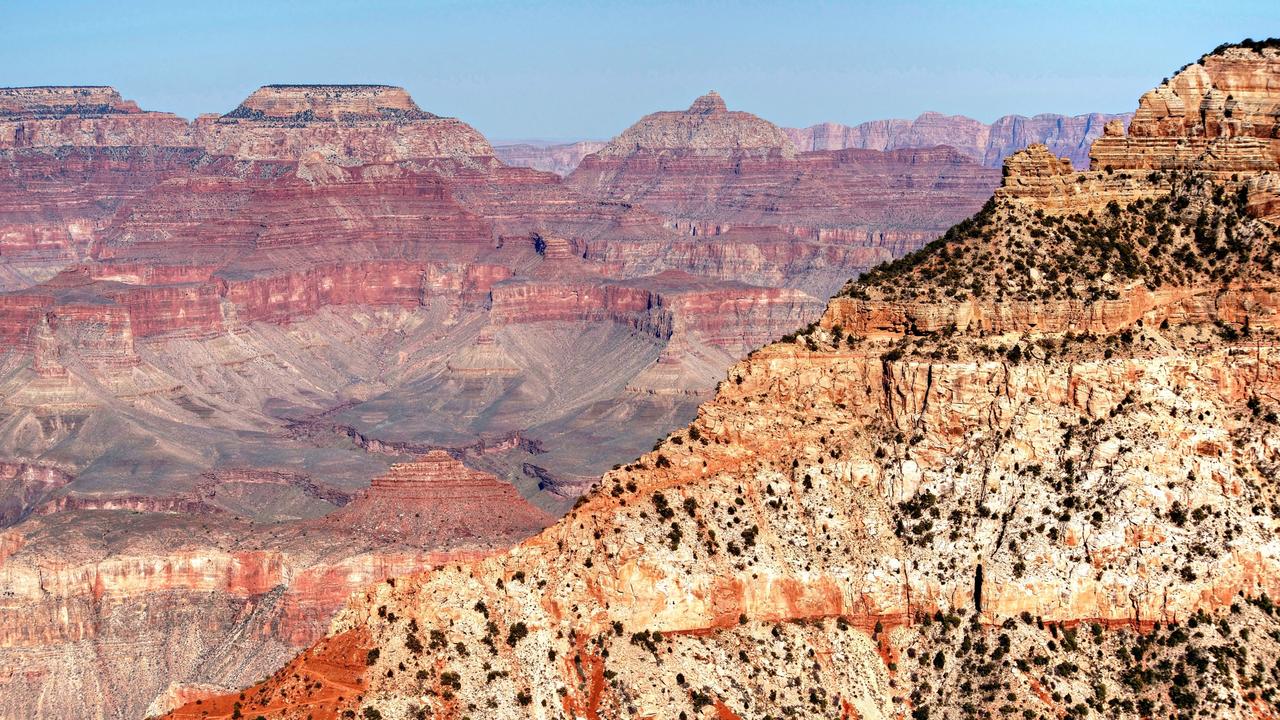
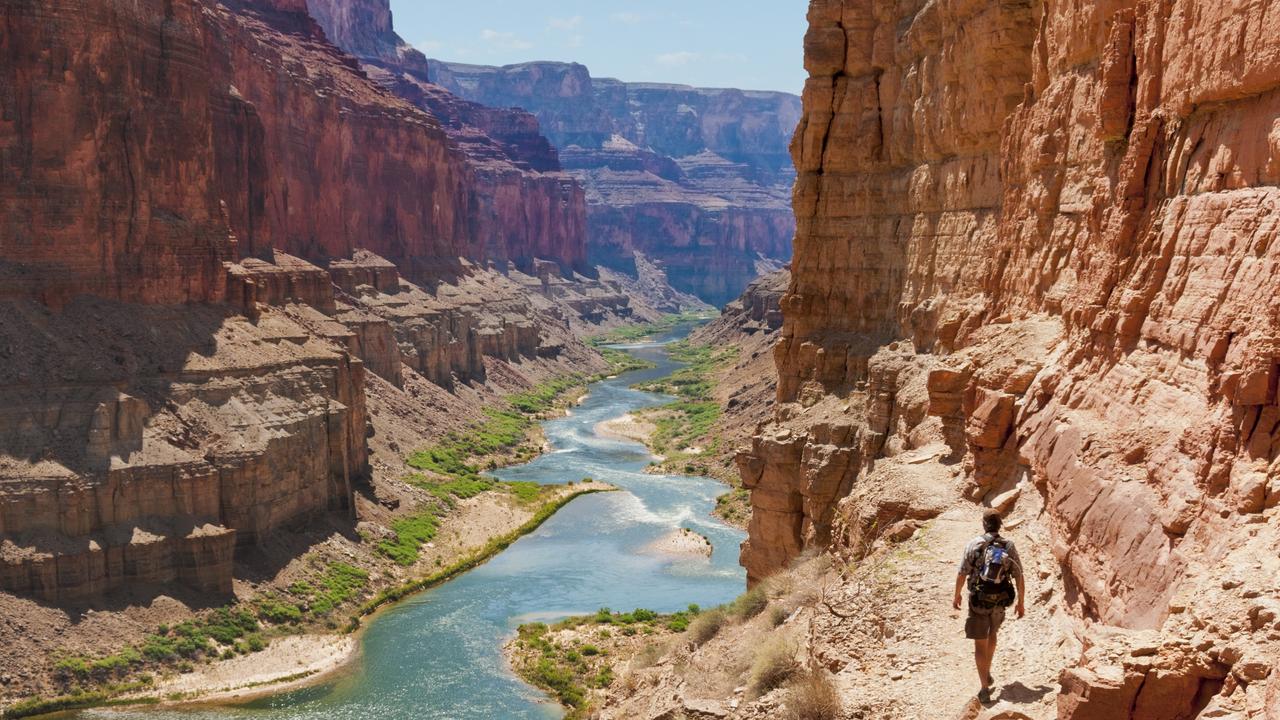

The spectacular site has been carved, over millions of years, by the Colorado River which cuts down through the Colorado Plateau.
The views from almost anywhere within the vicinity of the place are mind-blowing, but it’s from the south and north rims where the canyon really shines.
Put simply, it’s a colossal chasm that spans approximately 446kms in length, stretches up to 29km in width and reaches an astounding depth of almost 2km. Its sheer scale and intricately layered rock formations draw millions of visitors from across the globe every year.
Some people hike it for days or weeks, some walk a small portion of the rim, others take a ride on a mule from top to bottom – and a few enjoy helicopter rides over it or boat and raft rides through it.
Whatever way you explore the Grand Canyon, there’s no missing the vibrant crimson hues that adorn its walls at sunset, further accentuating the grandeur of this natural masterpiece, and leaving visitors in sheer admiration of its vastness and breathtaking vistas.
Desert View is a small settlement on the South Rim located about 41km east of Grand Canyon Village, and offers some cracking views of the Painted Desert, a vast, striated badlands that extends some 240km from the eastern end of the Grand Canyon.
This spot alone is worth basking in or packing a picnic lunch or dinner for, with the Grand Canyon and the Painted Desert both in all their spectacular glory, in one sweeping, view.
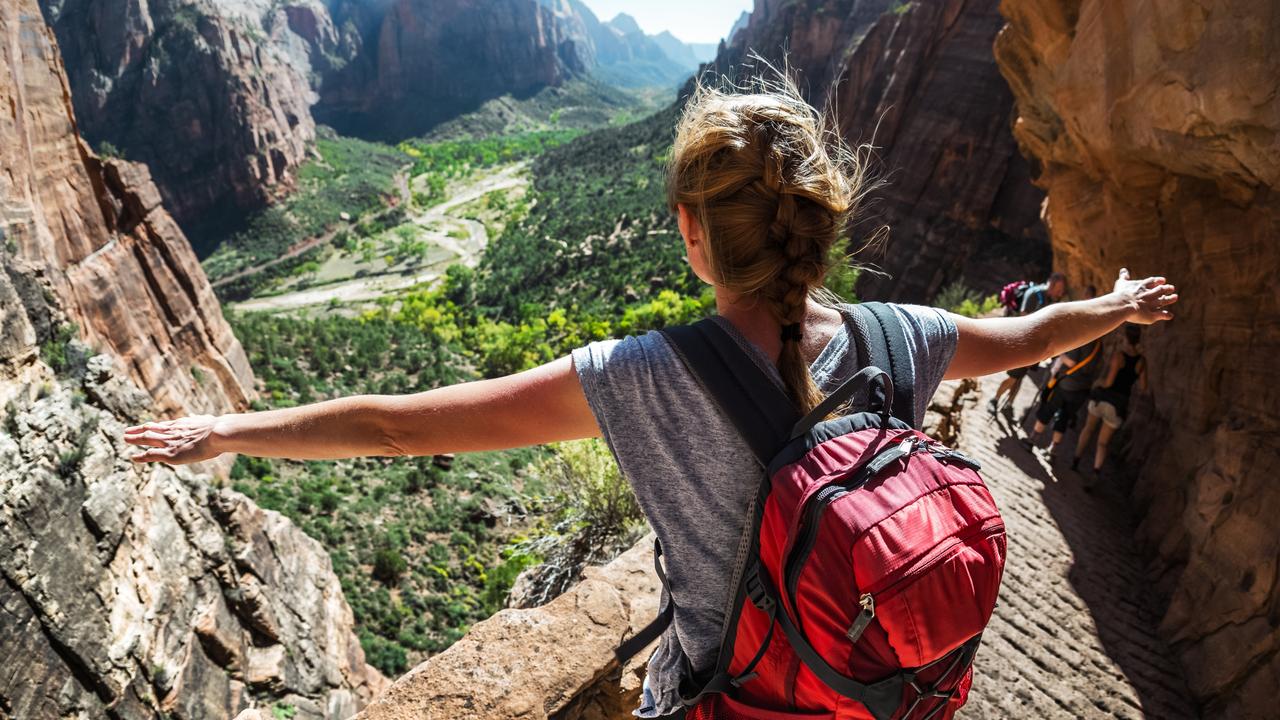
Lake Powell, Arizona
Glen Canyon – now largely beneath the waters of Lake Powell – is sometimes referred to as “the lost canyon”.
Powell, which straddles the state line separating Arizona and Utah, is more than 500 feet deep in places. But, despite its name, isn’t actually a lake. In the early 1960s, the United States Bureau of Reclamation erected a seven-hundred-and-ten-foot-tall concrete arch dam on the Colorado River, near where it crosses from Utah into Arizona. The bureau named the dam for the stretch of the river that it was submerging – Glen Canyon.
The place has since acquired an almost mythical status. It’s kind of an Eden, as spectacular as the Grand Canyon but more peaceful. Like a fairytale maze of side canyons, and side canyons with their own side canyons, each one offering a different marvel.
Water released from Powell, which serves the upper basin, flows into Marble Canyon, then through the Grand Canyon and into Mead.
In this sense, Powell is a reservoir for a reservoir, and a striking one at that.
The contrast of the red desert plains that meet the glistening, white limestone mountains and azure blue waters is a stunning sight and can be best appreciated exploring on foot or while on one of several boat and rafting tours offered as part of Collette’s tour, or separately. From here, it’s a stone’s throw to the Utah border where even more magic awaits.
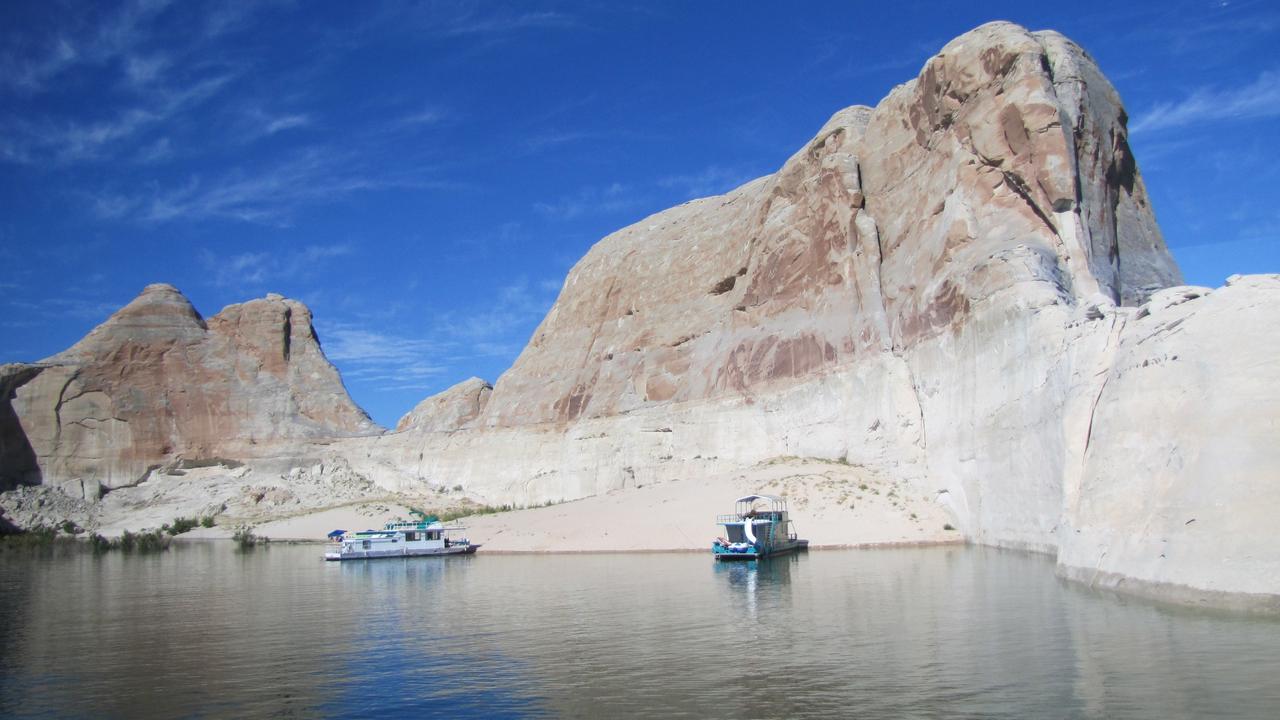
Bryce Canyon National Park, Utah
Bryce National Park, situated in southern Utah, offers a stark contrast to the Grand Canyon’s sweeping panoramas. Here, a myriad of stunning spires, known as “hoodoos”, dominate the landscape.
Hoodoos exist on every continent, but here is the largest concentration found anywhere on Earth. Situated along a high plateau at the top of the Grand Staircase, the park’s high elevations include numerous life communities, fantastic dark skies, and geological wonders that defy description.
The product of extreme erosion, these slender and delicate rock formations are formed when ice and rainwater wear away the weak limestone that makes up the Claron Formation, creating an otherworldly ambience.
Bryce Canyon is not a single canyon, but a series of natural amphitheatres or bowls, carved into the edge of a high plateau. The most famous of these is the Bryce Amphitheatre, which is filled with the irregularly eroded spires of rocks.
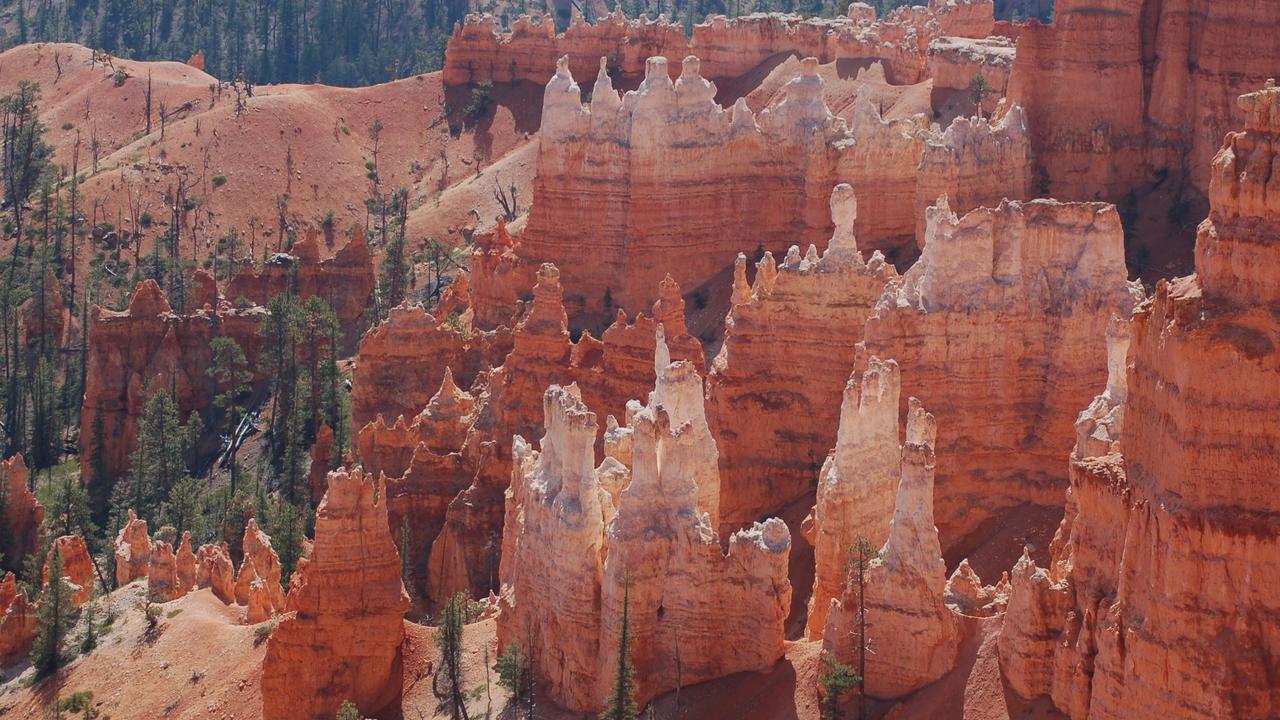

From dawn’s first light, when the hoodoos come alive in golden hues, to the eerie glow of moonlight casting enchanting shadows, Bryce National Park is an artistic masterpiece crafted by Mother Nature unlike anything else.
There are several excellent hiking trails to experience the park from all different levels and various lookout points, all found within the first few kilometres of the park: Bryce Point, Inspiration Point, Sunset Point, and Sunrise Point.
Zion National Park, Utah
Zion National Park, also located in Utah, is revered for its sheer cliffs, narrow slot canyons, and lush vegetation.
The drive into Zion Canyon is a complete thrill within itself as you wind down roads deep into the cream, pink and red sandstone cliffs – but it’s also only just where the wonderment begins in this magical part of the world.
In the early Jurassic, the climate of the Colorado Plateau dried significantly, creating desert conditions over a broad region. The Navajo Sandstone – which consists of thick layers of cross-bedded sandstone formed by windblown sand dunes in a vast ancient desert – is the result of the largest known sand desert in the history of our planet, which covered the area of today’s Colorado Plateau and beyond.
Nestled within the graceful folds of the Colorado Plateau, this park showcases a diverse ecosystem that teems with life. As visitors traverse the awe-inspiring Zion Canyon, they are greeted by dramatic rock faces that tower above, casting their majestic shadows upon the verdant landscape.
Right near the entrance to the park is the charming village of Springdale. The beautiful area sits in between the mountains and has a variety of restaurants, shops, and accommodations. Because it is right outside of Zion National Park, it is incredibly scenic, and offers stunning views of the canyons in the area from every angle.



But it’s the nature most people come here for. The parks boasts many hiking trails of all difficulty levels. But for those able to look past the “danger” sign with the latest human death toll, Angel’s Landing is where the real adrenaline-seekers go. It’s a challenging yet rewarding ascent up a narrow ridge, boasting unparalleled views of the park’s stunning red rock formations, and the Virgin River flowing far below.

A more moderate track takes hikers to the Emerald pools, past and under waterfalls, all while offering magnificent views of the park.
At the bottom of the mountains is the river walk, a flat pathway that winds past the rapids and around the canyon. It’s a peaceful way to end the trip as it all comes to a close. That is until you find yourself in Las Vegas, Nevada, for the final night, because that’s where everyone on the tour flies home from. In a strange way, Sin City is the perfect way to round off the adventure, and reacquaint yourself with wider civilisation and reminisce about everything you’ve just seen and experienced over a few drinks.
The Grand Canyon, Lake Powell, Bryce National Park, and Zion National Park stand as testament to the extraordinary forces that have shaped our Earth and the extraordinary beauty created from it. At times, it was easy to feel like you’re wandering around on another planet in each of these places – a description that can probably also be applied to Vegas, in many respects but for completely different reasons.
Ultimately, visiting US canyons country is an experience of a lifetime – made even better when you make the time to take it all in.
This writer was a guest of travel company, Collette, which offers 160 tours across all seven continents.





